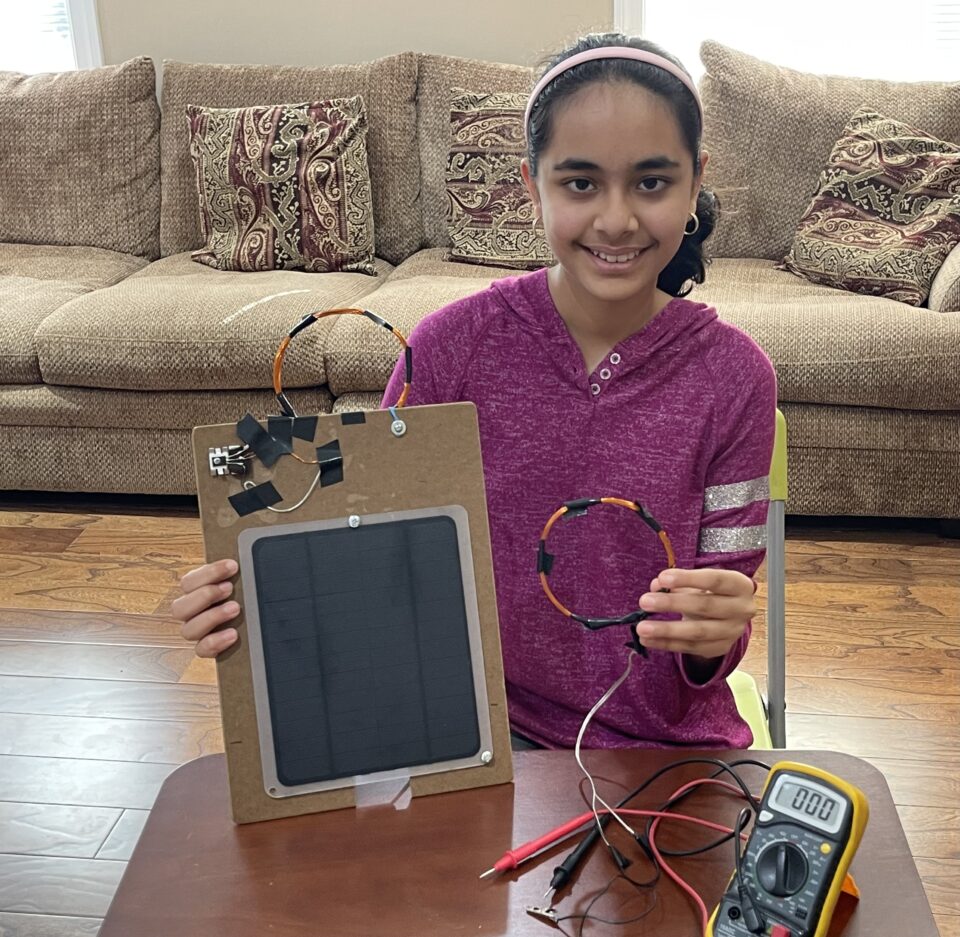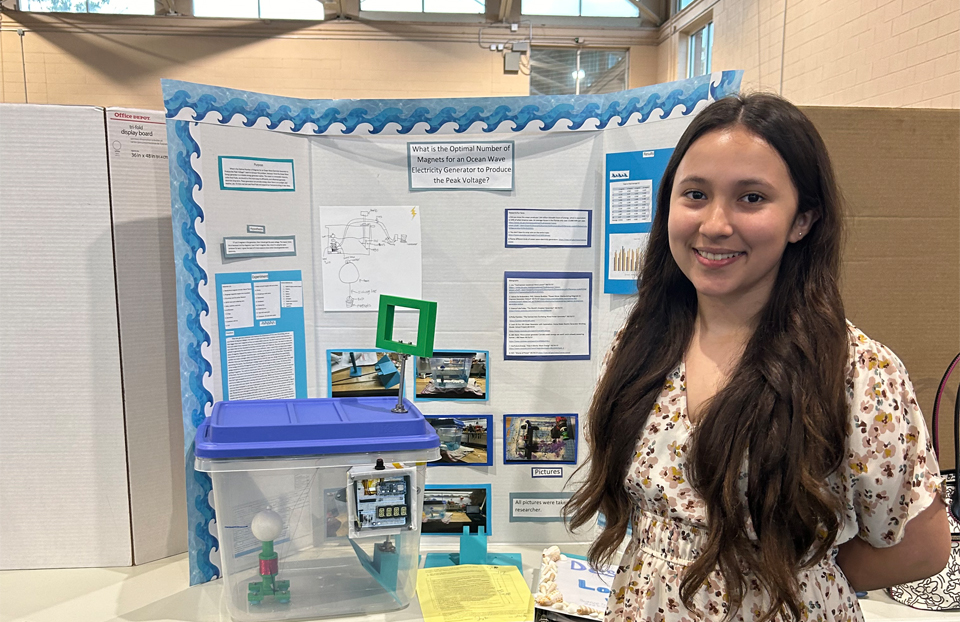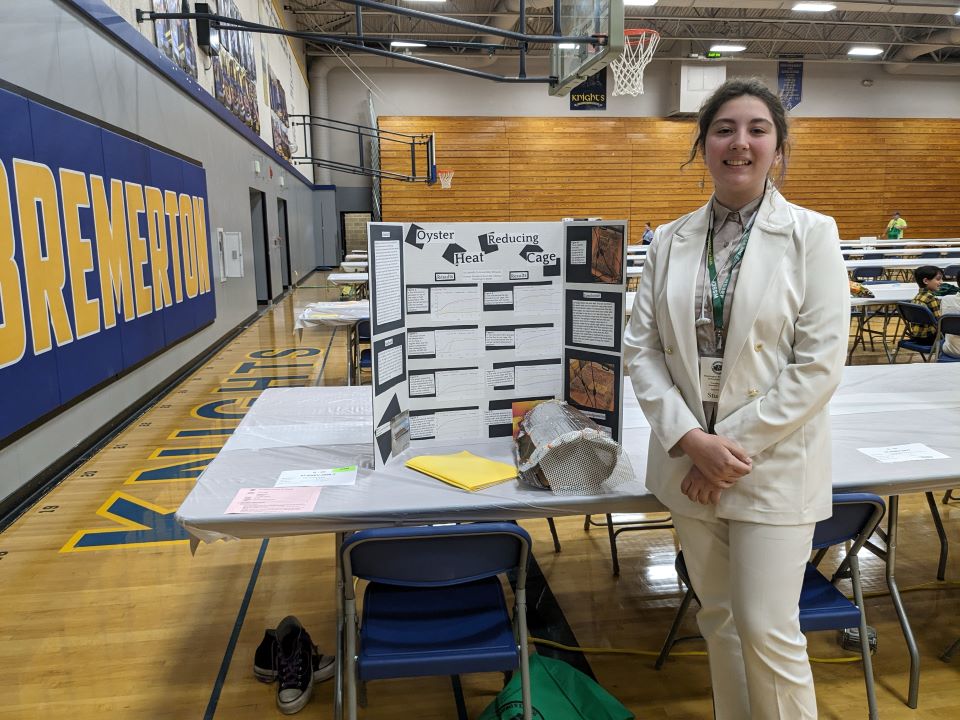Renewable energy from space? One student hopes to harness it.

While renewable energy sources like wind and solar have become more common across the United States, fossil fuels remain the main source of energy. According to the U.S. Information Administration’s (EIA) International Energy Outlook 2021 (IEO2021), the global supply of fossil fuels and biofuels is expected to adequately meet global demands for liquid fuel through 2050. Renewable energy technologies have improved to become more efficient and less costly, however most renewable energies are unable to provide a constant supply of energy.
This issue inspired Shriya Tailor, a middle school student from Duluth, Georgia, to find a constant renewable energy supply that created energy at all hours of the day and in any weather condition.
She looked to space for this solution, leading her to design a prototype for a “Solar Energy Station.” Shriya says the station, made of solar cells, would need to be around 50 miles away from earth for the energy waves to be transmitted back to earth via electromagnetic fields, then collected by an antenna and converted back to electricity. Consisting of a small solar panel, switching circuit, and transmitting and receiving coils, Shriya’s prototype allowed her to test her process here on earth.
Once the solar power was converted to energy, the switching circuit converted Direct Current (DC) voltage into Alternating Current (AC) voltage. The AC voltage traveled through one coil and created magnetic waves which were received by another coil and converted back to electricity. Shriya says this proved that her prototype could transfer solar energy from one coil to another, remote receiver coil.
Through her research, Shriya learned that the world uses around 65 billion Kilowatt hour (kWh) of energy per day. Since a solar panel generates about 300 watts of power, she found that 216 billion solar panels would be needed for her solar energy station to power the globe each day. Once the energy is received on earth, she says any surplus can be stored in rechargeable batteries until it is needed.
“With this project, I got the opportunity to put the concepts I have learned from books into practical use,” said Shriya. “For example, when you pass current through a coil, a magnetic field is generated. While reading this in a book sounds interesting, seeing it happening is really fascinating.”
Despite facing a few challenges during the project, like learning how to use a soldering iron and cool a transistor, Shriya was able to problem solve by upgrading to a larger solar panel and transistor and attaching a heat sink to prevent burning.
“I feel very honored and happy that the Lemelson Foundation recognized my project and awarded me the Early Inventor Prize,” she says. “This will motivate me to take on more challenges on the issues our communities are facing and create a solution to improve our lives.”
Shriya’s plans for her “Solar Energy Station” include increasing the range of the power transfer from space to earth. Once she does this, she is considering applying for a patent. “I am very confident that this can become a reality if we dedicate the right resources and continue to do more research on it.”
Shriya received the Lemelson Early Inventor Prize for her work at the Gwinnett Regional Fair in Duluth, Georgia.


